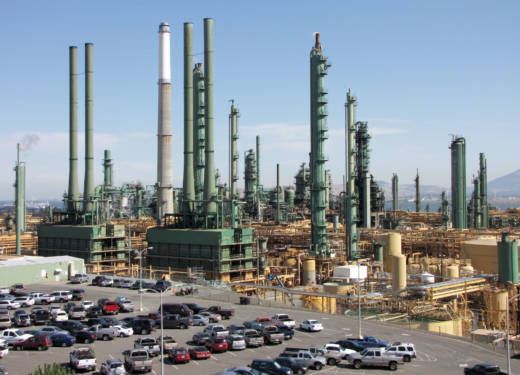Under the new proposal up for a vote on Tuesday, Valero would pay $278,000 a year to fund a division chief position at the Benicia Fire Department. The person who holds that job would work as a public liaison and be the point of contact for residents who have concerns or complaints about releases from the refinery. Valero would respond to the division chief's "reasonable requests for information."
The proposal also calls for Valero to give risk management and safety plans to the city, provide the Fire Department with incident reports 72 hours after significant refinery malfunctions and hand over investigative reports to city officials. The city would also work to create a "single, easy" place where residents can find such reports.
The agreement also promises improved air monitoring by Valero.
Last November, the company completed installation of a set of air monitors along parts of the fence line of its refinery. But after the releases in March, the site that publishes the fence line data included a warning that all of its measurements should be considered "questionable until further notice" because several of its parts required adjustments.
City staff say Valero plans to build, install and maintain more air monitors along its northwest boundary at a cost of $1.5 million. The company is also expected to spend $460,000 on adding "community" air monitors that would be located in the city.
The measure has drawn mixed reaction from members of the City Council, which in the past has considered an industrial safety ordinance, or ISO, to give local officials more oversight of the refinery.
Benicia Mayor Elizabeth Patterson called the proposal a "good first step" but wanted assurances the new air monitors would be effective.
"We clearly need to improve our air quality and acknowledge all the sources of air pollution," Patterson said in an email Monday.
"This looks like a decent attempt to deal with all the issues that have been presented regarding air monitors and ISOs," said Councilman Tom Campbell.
But Campbell pointed out that there's no timetable for the proposed actions. He said if the Fire Department's new division chief who worked as a public liaison is aggressive, the agreement would work.
"The division chief is in our seat at the table," he said.
Councilman Steve Young called the proposal "an improvement" over current practices, but said it should be stronger.
"There should also be warnings to the public prior to any planned instances of increased flaring, as happens during turnarounds or other major maintenance activities," Young said.
Councilmember Christina Strawbridge, the town's vice mayor, called the agreement "well thought out and void of politics."
A spokeswoman for Valero declined to comment on the proposal.
The March problems were the latest in a series of incidents in which the city and company have sometimes been at odds.
In September 2016, the Benicia City Council rejected Valero's plan to build a railroad terminal that would allow trains to deliver crude petroleum to the refinery.
In May 2017, the refinery suffered a power outage that triggered the release of more than 80,000 pounds of sulfur dioxide.
That 2017 episode led to an effort by some on the council to consider an industrial safety ordinance.
Mayor Patterson, who complained that Valero and agencies that have oversight of its refinery have failed to provide the city "a seat at the table" when it comes to information about the facility's problems, championed the measure.
The City Council rejected the ordinance a year ago.
But debate over the regulations set the stage for last November's hard-fought election in which Strawbridge and another council candidate, both backed by a political action committee funded by Valero and its workers' unions, beat an environmentalist candidate backed by Patterson.
Strawbridge, who voted against Valero's bid to build a crude-by-rail terminal, acknowledged in an email Sunday that "tension had escalated with the refinery since the city went through that process. It intensified with last year's election."
The March malfunctions are the source of several ongoing investigations: Valero, the air district, state workplace regulators and Solano County inspectors are still looking into the incident.
The releases exposed weaknesses in how the air in Benicia is monitored after a refinery incident.
When soot began spewing from the refinery's stacks, for instance, the Bay Area Air Quality Management District had to send a van to Benicia because it does not run a stationary air monitoring device in the city's residential areas.
Since then the agency has been working on finding a monitoring site, air district spokeswoman Kristine Roselius said Monday.
District officials visited six potential sites and determined that it wants to place a new air monitor at Robert Semple Elementary School, which is three-quarters of a mile southwest of the refinery, Roselius said.
